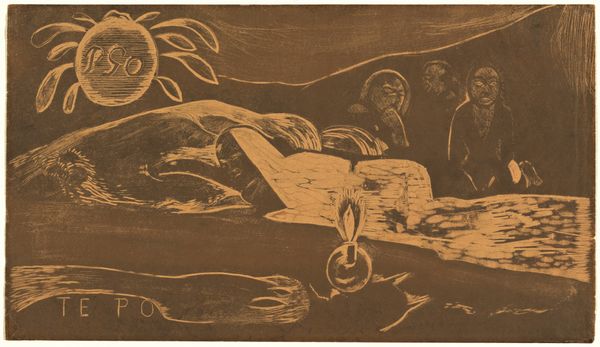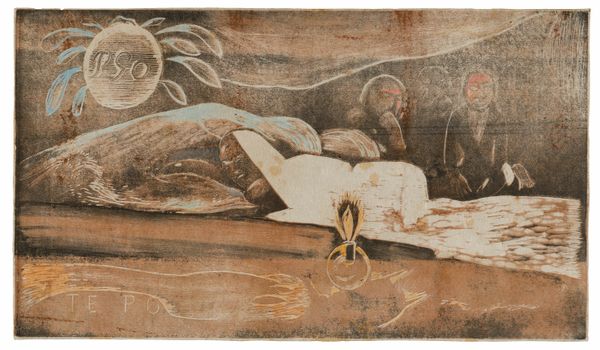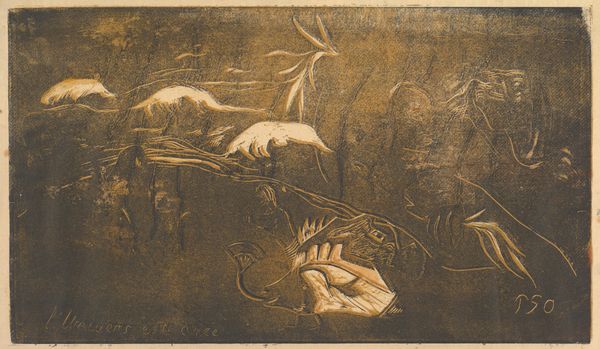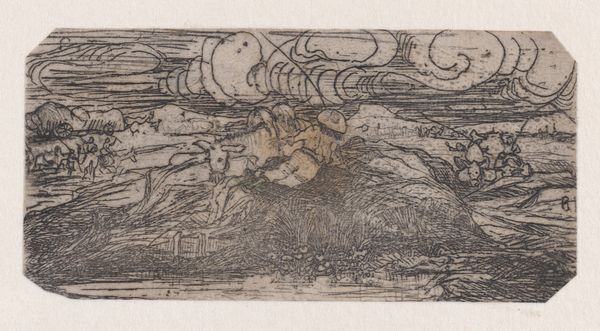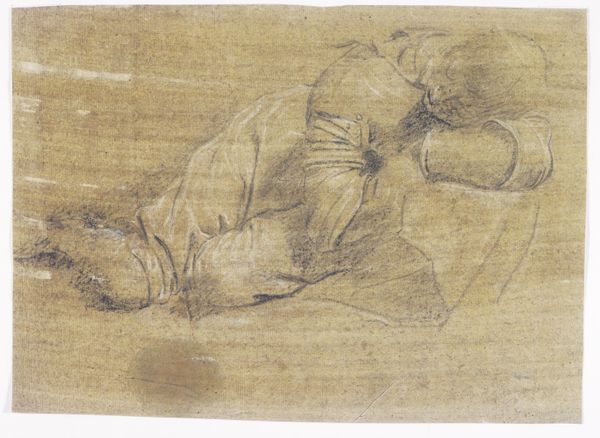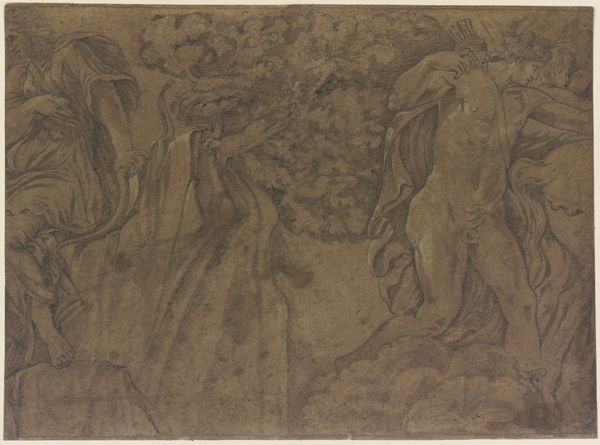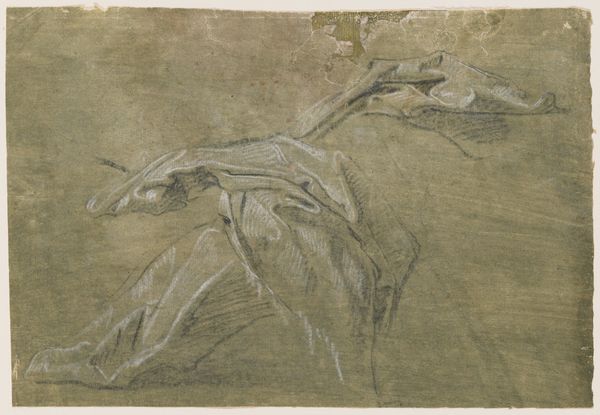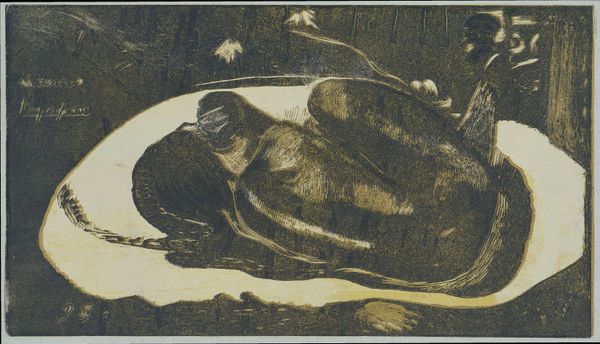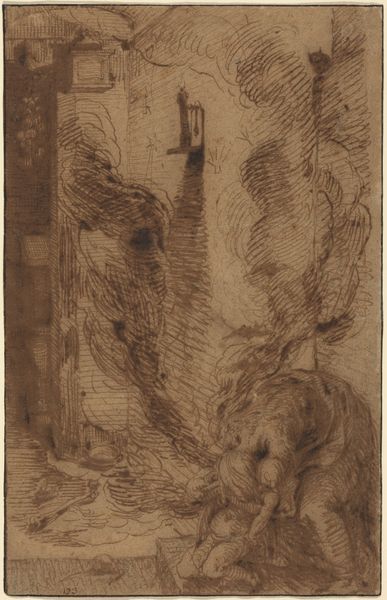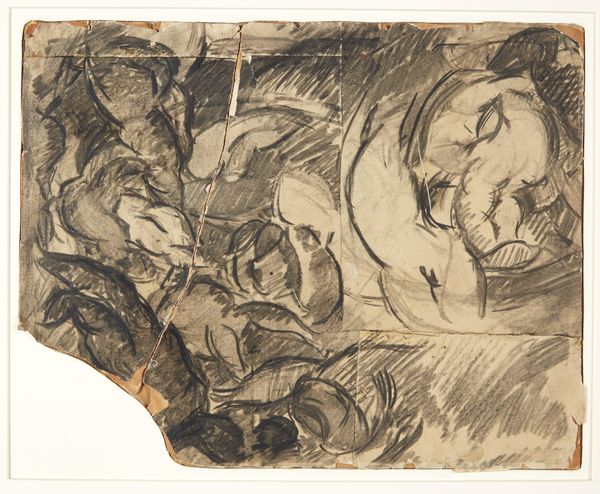
drawing, print, etching, woodcut
#
drawing
#
narrative-art
# print
#
etching
#
figuration
#
woodcut
#
symbolism
#
post-impressionism
Dimensions: 8 3/16 x 14 1/8 in. (20.8 x 35.9 cm) trimmed just outside image
Copyright: Public Domain
Editor: Here we have Paul Gauguin's "Te Po," created around 1893-94. It’s a print, mixing etching and woodcut. The monochrome, reddish-brown palette creates this almost dreamlike state, and the figures seem to emerge from the darkness. What strikes you most about it? Curator: Well, the title "Te Po" translates to "The Night" in Tahitian. Gauguin's work from this period, we must remember, is steeped in his romanticized and, frankly, colonial gaze upon Polynesian culture. He attempts to capture a primordial, mystical Tahiti, but that vision is undeniably filtered through a Western lens. How do we reconcile this artist’s project, one built on exoticism, with our understanding of cultural representation today? Editor: So, the 'dreamlike' quality I observed could actually be seen as a kind of... appropriation of Tahitian spirituality? Curator: Exactly. Think about how the figures are rendered. Do they convey agency, or do they succumb to a Western fantasy of the "exotic"? Gauguin was undeniably grappling with complex issues of primitivism versus civilization, but through the power dynamics inherent in his position as a European artist depicting Tahitian subjects. What do *you* make of the reclining figure, seemingly at the center of it all? Editor: She seems passive, almost vulnerable, reinforcing that exoticized view, I guess. It's interesting how the printmaking techniques also add to this feeling - like he's revealing something hidden, or… illicit. Curator: Yes, and that sense of revelation is crucial. The 'night' isn't just a time; it's a metaphor for the perceived mysteries and hidden depths of a culture viewed through a colonial perspective. Looking at it this way asks us to be responsible viewers, right? Editor: Definitely! I hadn’t really considered Gauguin’s role in perpetuating these views. Thanks, this has given me a whole new way to see it. Curator: It's a reminder that art doesn't exist in a vacuum and examining its historical and cultural contexts is key.
Comments
No comments
Be the first to comment and join the conversation on the ultimate creative platform.
